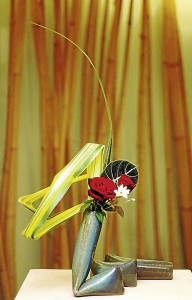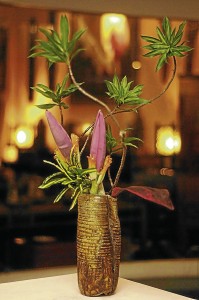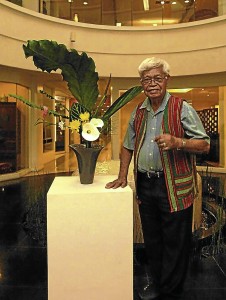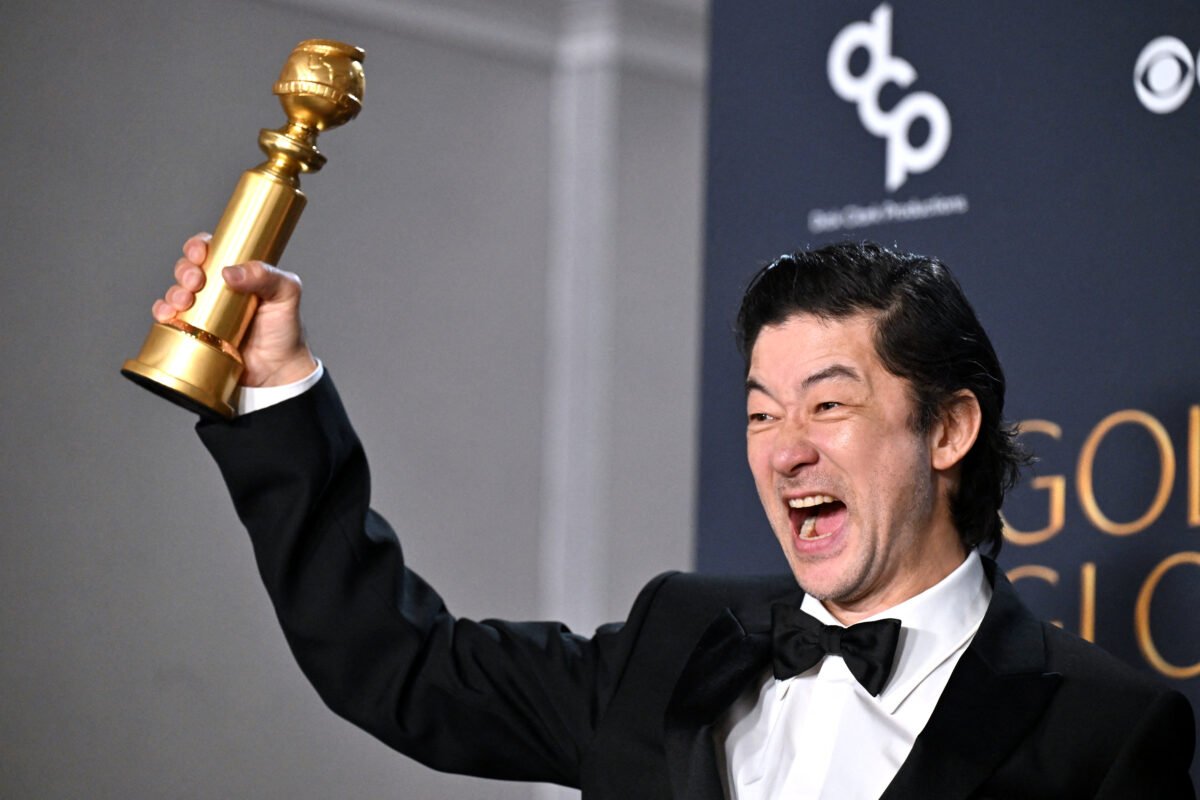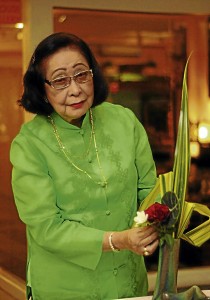
They are bound by a common love of flowers and plants and a deep-seated urge to create beauty to thank God for nature’s blessings.
“I was a member of Ikebana International when some of the other Ikebana ladies started taking lessons under Mrs. Akiko Yamamoto, a lady from Japan who was a teacher of the Ikenobo School,” recounts Serapion Metilla.” I was asked to join their study group and I liked the camaraderie of the Ikenobo students, so I joined and learned to arrange the Ikenobo way.
“That was almost 30 years ago,” he says lightheartedly. “Many in our group have now gone on to arrange flowers for God.”
Ikenobo is different from the other Ikebana styles because it is minimalist, and the arranger tries to use the least number of flowers, leaves and branches in his arrangement.
“Also, the Ikenobo school is the origin of the art of Ikebana, founded 550 years ago by a nobleman-turned-monk who took on a new name when he took his monastic vows.”
The name he took was that of his home location—Ikenobo means “a hut by the pond.”
Today, Ikenobo is a flower dynasty; Yuki Ikenobo, the present headmaster designate and daughter of the headmaster, will be the 46th in the line of religious leaders who heads this floral school.
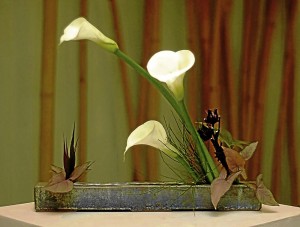
Bernabe says she had many kenzans (devices used for flower arrangements) from her mother, but didn’t know how to use them. Then she met Liling Nuguid, a founding member of the Ikenobo-Ikebana Society of Manila, who asked her to attend a workshop by a visiting Japanese professor from Kyoto.
Ordinary flowers and grass
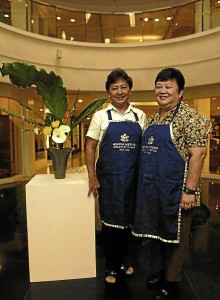
Dr. Lupe Lazaro adds, “I discovered that I could create beautiful flower arrangements using ordinary flowers and grass from my garden. I didn’t have to go buy flowers from the flower markets, and I could have unique flower arrangements to brighten my home and impress my family!”
Ikebana comes from two Japanese words—ikeru, meaning “to bring to life,” and hana, or flower. As the present Ikenobo headmaster Sen’ei Ikenobo explained to me, Ikebana is a way to communicate one’s emotions to the viewer, and every Ikebana creation is a way to accept the higher power of a deity over the person making the flower arrangement. It is a prayer in the form of a floral offering, and not merely a decoration.
That’s why in the traditional Japanese way, one must be in a kneeling position when doing an Ikebana arrangement, as it is a religious ritual. Of course, since Ikebana has been introduced to the Western world after World War II, traditional practices have changed.
Like everything else, Ikenobo Ikebana has evolved new styles, since standards of beauty change with the times. Manila chapter members can go to
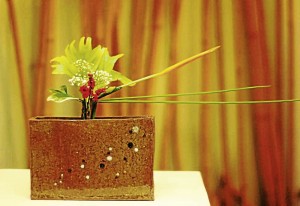
The Ikenobo Ikebana Society of Manila meets every fourth Tuesday of the month at the seminar room of Serapion Metilla’s Plant Arts, Manila Seedling Bank, Agham Road cor. Quezon Avenue Extension, Quezon City.
There will be a floral exhibit on Nov. 25-26 at LRI Design Plaza Lobby, 210 Nicanor Garcia St. (formerly Reposo St.), 


